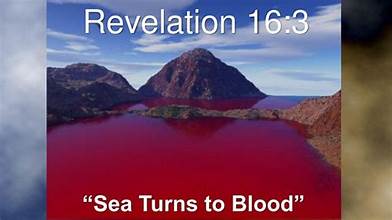By fypfeed| News | 8 August 2025
Noah’s Ark A stunning underwater city located near what is believed to be the place of rest in Noah’s Ark could change the way we think about some of Bible’s well-known stories. Though it was initially discovered in 1997, the site’s archaeological and historical significance is only coming to light, and could provide clues to an extremely advanced civilization that existed prior to the end of the Ice Age.
Discovery Beneath Lake Van
The ruins of a mysterious structure lie 85 feet below Lake Van’s surface. Lake Van, located close to Gevas, a town in Gevas in the eastern part of Turkey. The lake is located about 150 miles away from Mount Ararat, generally believed to be the place where Noah’s Ark rested following Noah’s Ark was destroyed by the Great Flood.
Turkish underwater filmmaker Tahsin Ceylan first came across the city submerged in 1997. The discovery was not widely reported and was not widely reported in the early days. The significance of the discovery is only now being re-examined by archaeologists and historians, who are attempting to unravel its possible connection to the flood stories of the past.
“Unfortunately, Tahsin discovered what I think was one of the most significant archaeological discoveries in history, and he didn’t get the recognition he deserved because it wasn’t properly labeled or understood,” Archaeologist Matthew LaCroix on the Matt Beall Limitless podcast..
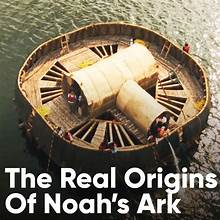
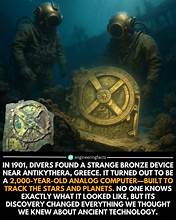
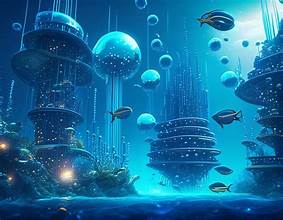
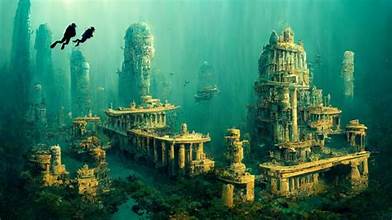
The site covers about half a mile under water and is home to an ancient The site covers about half a mile under water and is home to an ancient stone fortress as well as circular temples decorated by intricate carvings. The most notable design can be seen in the six-spoked ‘Flower Of Life symbol as well as been seen on ancient sites located in Peru as well as Bolivia.
Evidence of an Advanced Civilization
Researchers believe that the underwater remains could be the remains of the remains of a high-tech civilization that existed before the recorded the beginning of recorded. With a history of nearly one thousand years this civilization may be predating the current Ice Age and could provide insights into the flood story of the past that exist in a variety of cultures.
A variety of ancient cultures documented versions of the global flood in various ancient cultures. Although the Bible describes the protagonist of the story as Noah and other peoples refer to the man in the form of Ziusudra as well as Utnapishtim which suggests that the story was shared across the globe and handed down through the millennia.
LaCroix discusses how the geological evidence matches with the flood stories. In the event of an eruption, Mount Nemrut, an important Turkish volcanic eruption, was believed to block the Mirat River and triggered a devastating flood in the Younger Dryas period (12,900-11,700 years in the past).
“The flood evidence in this region coincides with these ruins, which suggests that this civilization may have experienced a massive deluge — the one later immortalized in flood myths around the world,” LaCroix stated.
Archaeological Highlights
The city has many fascinating characteristics:
- Fortress Constructions Fortresses constructed of stone to show the city’s strategic significance.
- Circular Temples Most often, they are used for ceremonies or religious purposes that feature exquisite stonework and symbols in the carvings.
- Flower of Life Symbol: A six-spoked design which is seen in distant civilizations, suggesting possible inter-cultural connections.
“As far as I’m aware, civilizations in the last 6,000 years did not have the technological capability to create this kind of stonework,” LaCroix stated, noting the technical expertise required for these precise structures.
Studies of sediment and soil close to the ruin also suggest massive flooding, which lends credence to the theory that the event’s catastrophic nature influenced later myths about floods, such as Noah’s Ark.
Reconsidering the Biblical Narrative
If the underwater city may be connected to historical floods, it may change our perception about the Noah’s Ark story. This discovery suggests that the story may not be solely symbolic, but is based on actual experiences of ancient civilizations within the area.
Biblical experts have long debated the historical authenticity of the Ark tale, however evidence from the eastern part of Turkey gives a convincing proof that the ancient inhabitants could have witnessed massive floods that triggered the mythology that we today identify with Noah.
“This site might serve as tangible evidence that a civilization existed here, facing the exact type of deluge that would later be preserved in oral and written traditions,” LaCroix said.
The presence of fortifications, temples, and elaborate stonework suggests the existence of a culture capable of interpreting and recording natural disasters and possibly inspiring myths about floods that have been passed through generations.
Global Flood Myths
The Lake Van ruins are not the only historical proof of an important prehistoric flood. Similar stories can be found in other cultures of the past:
- Mesopotamian Myths: Featuring Utnapishtim in the Epic of Gilgamesh.
- Sumerian Accounts Ziusudra is able to survive a huge flood in antiquated Sumerian tablets.
- Native American Flood Tales: Various indigenous cultures tell stories of floods that changed the landscape.
The repeated appearance of myths about floods across continents indicates possibilities of common historical event or a collective memories encoded in the storytelling tradition.
Implications for Archaeology and Theology
The discovery bridges the gap in Biblical studies and archaeology. If the connection between the city and ancient floods is proved it could offer insights into:
- Civilization Technology the sophistication and complexity of Stonework challenge the prehistoric notion of engineering capabilities.
- Historic Accuracy The physical evidence could confirm the possibility of huge regional floods that inspired stories from the Bible and other ancient texts.
- Cultural Continuity Flood myths that are shared suggest that experiences and knowledge were shared across the early civilizations.
The scholars are now studying the site in greater detail by using modern techniques for underwater archaeology to study the structures, gather samples and then map the site’s ruins using three-dimensional imaging.
Future Research
Further research will attempt to answer several crucial questions:
- Who was the person who built the city under water or what did their culture like?
- Was the flood an isolated event or a part of a bigger, global climate change event?
- How did they adapt and preserve their tales for the future generations?
The Turkish government has also indicated its desire to preserve the site as a part of Turkey’s heritage of culture and possibly making it open to controlled tourism and further research.
LaCroix stresses its importance to collaborate
“This discovery is huge. It demands global attention and multidisciplinary study to fully comprehend the impact it has on human history and the culture.”
Conclusion
The city submerged under Lake Van represents one of the most intriguing archeological discoveries of recent years. Its connection to devastating floods, the use of advanced methods of construction, and the possibility of connections in Noah’s Ark Noah’s Ark story could transform the way that historians and theologians as well as archaeologists view the world of the past.
The Biblical tale of Noah has captivated people’s both faith and imagination, remains provide a historical background for these myths and suggest that the events described in the Bible could be influenced by actual experiences of the ancient civilizations.
As more research is conducted the underwater city of Lake Van might not just provide insight into The Great Flood but also challenge our knowledge of the technological and social capabilities of the human race around 12000 years back. The world is watching with awe and wonders if this find could provide us with an insight into the lost civilization of prehistory is a real Atlantis hidden in the depths of the eastern part of Turkey.


